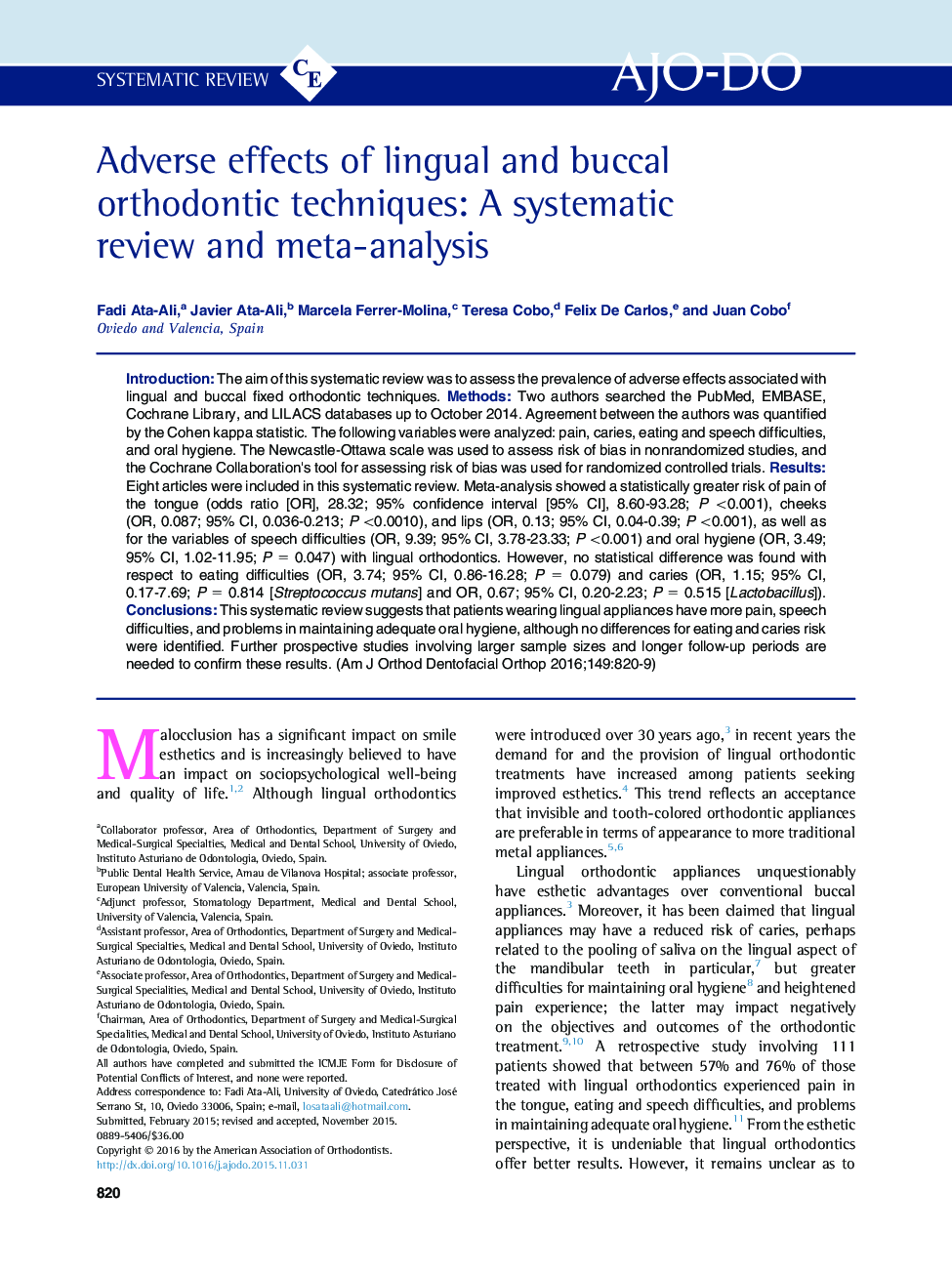| Article ID | Journal | Published Year | Pages | File Type |
|---|---|---|---|---|
| 3115567 | American Journal of Orthodontics and Dentofacial Orthopedics | 2016 | 10 Pages |
•Adverse effects of lingual and buccal appliances were assessed in a meta-analysis.•Lingual appliance patients had more pain and speech difficulties and poorer oral hygiene.•No differences in eating and caries risk were identified.•Larger sample sizes and longer follow-up periods are needed to confirm these results.
IntroductionThe aim of this systematic review was to assess the prevalence of adverse effects associated with lingual and buccal fixed orthodontic techniques.MethodsTwo authors searched the PubMed, EMBASE, Cochrane Library, and LILACS databases up to October 2014. Agreement between the authors was quantified by the Cohen kappa statistic. The following variables were analyzed: pain, caries, eating and speech difficulties, and oral hygiene. The Newcastle-Ottawa scale was used to assess risk of bias in nonrandomized studies, and the Cochrane Collaboration's tool for assessing risk of bias was used for randomized controlled trials.ResultsEight articles were included in this systematic review. Meta-analysis showed a statistically greater risk of pain of the tongue (odds ratio [OR], 28.32; 95% confidence interval [95% CI], 8.60-93.28; P <0.001), cheeks (OR, 0.087; 95% CI, 0.036-0.213; P <0.0010), and lips (OR, 0.13; 95% CI, 0.04-0.39; P <0.001), as well as for the variables of speech difficulties (OR, 9.39; 95% CI, 3.78-23.33; P <0.001) and oral hygiene (OR, 3.49; 95% CI, 1.02-11.95; P = 0.047) with lingual orthodontics. However, no statistical difference was found with respect to eating difficulties (OR, 3.74; 95% CI, 0.86-16.28; P = 0.079) and caries (OR, 1.15; 95% CI, 0.17-7.69; P = 0.814 [Streptococcus mutans] and OR, 0.67; 95% CI, 0.20-2.23; P = 0.515 [Lactobacillus]).ConclusionsThis systematic review suggests that patients wearing lingual appliances have more pain, speech difficulties, and problems in maintaining adequate oral hygiene, although no differences for eating and caries risk were identified. Further prospective studies involving larger sample sizes and longer follow-up periods are needed to confirm these results.
